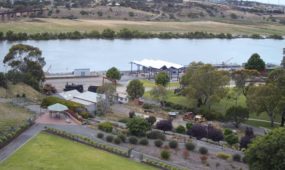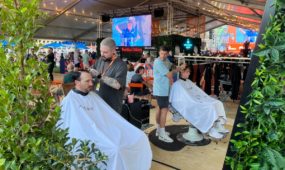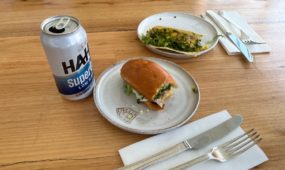Pristine island declares war on feral cats
Tourism
AN Australian island known for its natural beauty and native wildlife is set to become one of the world’s largest inhabited islands free of feral cats.

Sign up to receive notifications about new stories in this category.
Thank you for subscribing to story notifications.
Kangaroo Island is Australia’s third biggest offshore island and has long been regarded as one of the world’s most pristine natural environments.
The South Australian island, which is free of foxes, wild dogs and rabbits, has an estimated feral cat population of 5000 – outnumbering its human population of about 4500.
Natural Resources Kangaroo Island has launched its Feral cat eradication plan and aims to rid the island of the predators by 2030 in conjunction with a gradual and systematic phasing out of all domestic cats.
The Australian Government has pledged $500,000 towards the project’s $2 million first stage if it is re-elected next month.
Kangaroo Island Natural Resource Management Board Presiding Member Richard Trethewey said feral cats had negative impacts on agriculture, conservation, biodiversity and tourism.
“We have a very strong interest in protecting our wildlife and we are conscious of the fact that feral cats are very heavy predators of particularly our threatened species,” he said.
“There is also a significant impact on our sheep production – sarcosporidiosis and toxoplasmosis (spread by feral cats) are well recognized as debilitating problems for sheep on Kangaroo Island.
“So this is a huge opportunity for us here if we can manage to control and eradicate them.”
Feral cat predation is a major threat to the island's valuable and endemic fauna, with up to 50 native animal species at risk including endangered species the southern brown bandicoot, Kangaroo Island dunnart, Kangaroo Island echidna and southern emu wren.
The three stage project is underway with Stage 1 (2016-2019) including the trial of feral cat control techniques, establishing baseline monitoring programs and beginning a process for gradual phasing out of all cats.
Stage 2 (2019 – 2022) will include the eradication of feral cats from the Dudley Peninsula, construction of a feral cat-proof fence across the narrow 1 kilometre gap dividing the peninsula and the rest of the island and a gradual phasing out of cat ownership.
Dudley Peninsula is on the Kangaroo Island’s eastern side and includes the main ferry terminal, which links it to the mainland and the highway to the South Australian capital Adelaide, about 120km northeast.
Stage 3 (2022 – 2030) involves the eradication feral cats from the remainder of the 4400sq km island and the phasing out of all cat ownership.
Trethewey said the island’s vast tracts of native vegetation – about 47 per cent of its total area – had proven an excellent habitat for feral cats, adding to the challenge of the project.
“We recognize that it’s a big task, probably in the early years we can reduce the numbers quite significantly but to ensure that we’ve got the very last one we have to accept there’s quite a lot of time involved,” he said.
“But when we are successful it’s going to be a huge fillip to the Kangaroo Island brand.
“People come here for our natural systems and our wildlife and to be able to say we are feral cat free would be a fantastic boost.”
The eradication program will use detector dogs and “grooming” traps, which use sensors to detect DNA, body temperature and hair type to identify and separate feral cats from native wildlife. A toxic gel is sprayed on the feral cats fur by the sensor as they pass and is licked off by the cat, as part of its unique grooming ritual, resulting in death.
Trethewey said it was hoped testing of the grooming traps would be completed in time for them to begin being trialled on Kangaroo Island later this year.
He said the $500,000 government pledge was an excellent start but more funding was needed to ensure the project’s success.
“When we start to produce some figures on what we achieve initially we are hoping that there will be sponsors who come in to support the program and we’re working hard to try to achieve that,” Trethewey said.
The Federal Government funding pledge is part of Australia’s Threatened Species Strategy, which has targeted feral cats on five islands. The other four smaller islands are Bruny Island, French Island, Dirk Hartog Island and Christmas Island.
Australian Environment Minister Greg Hunt said all five communities were passionate about their wildlife and were willing to champion the cause of native species.
“Feral cats have directly contributed to the extinction of more than 20 mammals since first arriving in Australia, and they continue to wreak havoc. They pose a threat to around a third of our threatened mammals, reptiles, frogs and birds. We need new tools, approaches and partnerships to limit their impact,” he said.
Jump to next article



